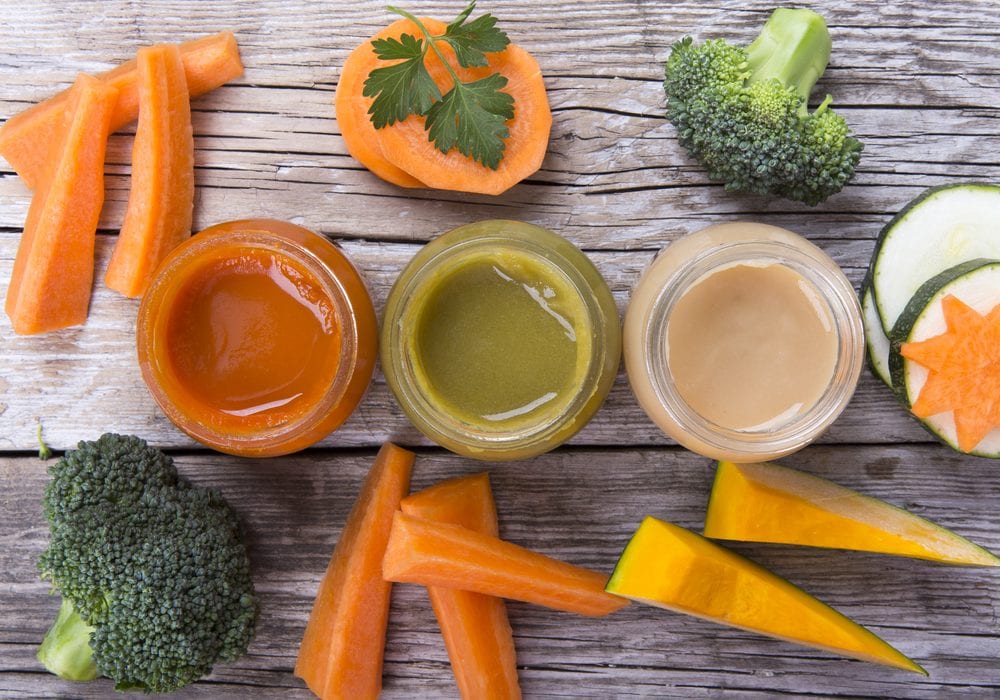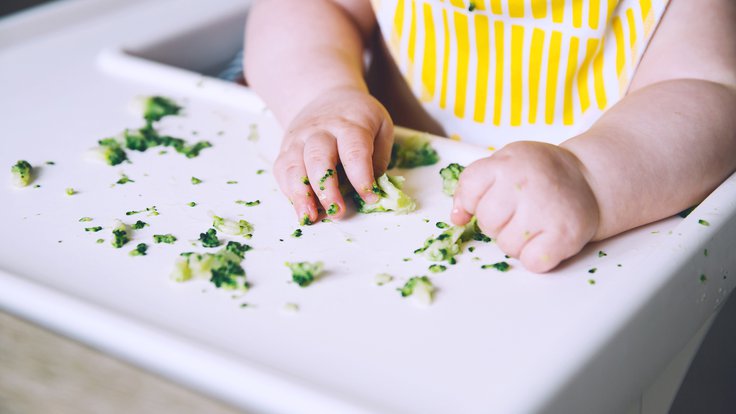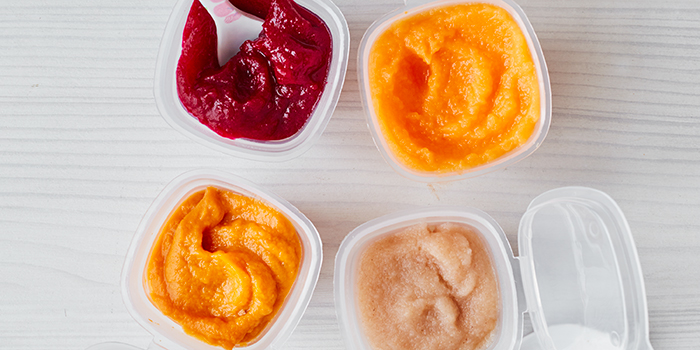We spoke with Sarah Almond Bushell, a leading Registered Dietitian and Nutritionist on the Zoono Family Panel, an initiative that supports the wellbeing of families, to get hed baby weaning guide and expert advice for parents about to start weaning their baby or toddler.
When to start weaning your baby
All babies develop at their own pace and so some will be ready for weaning sooner than others. As a guide, most babies will be ready to start weaning at around six months of age.
If you start weaning too early, your baby may push their food back out of their mouth and will struggle to pick up foods to put them into their mouth. They may seem uninterested in food, start to get frustrated and cry. If this happens, don’t worry. Stop trying for now and give it another go in a few weeks’ time.
You can assess whether they are developmentally ready to start weaning by looking out for the following signs:
- When your baby no longer has the tongue thrust reflex
- They can sit up and hold their head steady by themselves
- They have good hand-eye coordination and can bring objects up to their mouth by themselves
If your baby is older than six months old and still isn’t showing any of the signs, then you should still start introducing solid foods into their diet. At six months old their nutritional stores start to run low and their nutritional requirements become greater, so it’s important to start introducing solid food to make sure you’re meeting their needs for growth and development.

The baby weaning checklist
Before you start, make sure you have everything you need to start the weaning process. You don’t have to spend a fortune on expensive equipment, but there are a few essential items that you will need.
- A highchair with a footrest and a tray
- A bib
- Soft plastic baby waning spoons
- A free flow spouted beaker or mini open cup
- A small bowl or pot

Baby weaning: Start with vegetables
Bitter flavoured vegetables, such as spinach or courgette, may take longer for your baby to get used to and so it’s important to offer them first before sweeter vegetables otherwise your baby may reject them when you come to introduce them later.
Sweet vegetables, such as butternut squash and carrots, will be readily accepted by your baby as their sweet taste buds are more mature, so after a week or so of bitter veg, start introducing these.
Some veggies however may also cause wind, tummy ache or constipation while their digestive system adapts. Some mums might prefer to save windy vegetables such as broccoli, cauliflower and cabbage for a week or so further along the weaning process.
Research has shown that babies who are given a wide variety of bitter vegetables from an early age are more likely to eat them as they grow older, so give them different vegetables at each meal and repeat regularly to get your baby used to them.

Move your baby weaning forward with iron rich foods
Because weaning often doesn’t start till 6 months and babies iron stores have run out by then, its crucial to introduce iron rich foods very early on to your baby. This might be in the first week or two. Iron can be found in vegetable foods like lentils, spinach and broccoli but better sources are red meat, dark poultry meat, egg yolk and wholegrains. Fortified breakfast cereals are good too but please done buy those that are sweetened.
Make weaning your baby fun
Finally, make mealtimes an enjoyable experience from the start. Sit opposite your baby at eye level and have a happy, smiley face while you’re preparing and feeding them. Use an excited, sing-song tone of voice to tell them what they’re eating and let them explore the food with their hands if they want to.
Use plenty of encouragement – lots of ‘mmmmm’s’ and ‘aaaaaahhh’s’ to make them feel like they’re doing a great job. Always keep up the happy and excited performance during mealtimes. Even if your baby gets distressed, don’t worry. Babies pick up on anxiety, so take a deep breathe, stop and try again later. Follow this baby weaning guide, keep up the good work and you’ll get there!

Just a group of real women dealing with life’s daily struggles! Want to write for us? Email: hello@thedailystruggle.co.uk